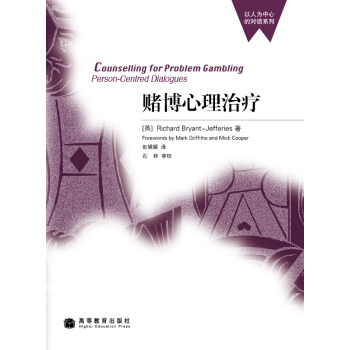

具体描述
编辑推荐
本书语言简练,易读易懂,操作性强,可作为我国高等院校心理学专业广大师生的教材或教学参考书,也可作为心理学工作者撰写心理学研究报告或论文的参考手册。
内容简介
许多心理学课程都要求学生们设计实验、撰写实验报告或研究报告。本书旨在为撰写实验报告和设计实验提供具体的指导。
《心理学实验的设计与报告(第3版,英文版)》共分两编,首编围绕如何撰写实验报告而展开,详略得当地介绍了报告的每个主要组成部分,指出了各部分在撰写中应该注意的问题,并根据新版的《APA论文写作与发表规范》,提供了相应的实验示例。第二编是关于实验设计与统计方法的内容。就心理学研究中经常采用的几种实验设计方法以及相关的统计方法做出了概要的介绍和评价,介绍了学生在日常学习中容易忽视,但却非常重要的两个概念:效力和效应大小;同时对报告中如何呈现图、表的问题进行了具体说明。
《心理学实验的设计与报告》(第3版)与前两版相比,在每一章都增加了新的小节,补充了新的内容,使内容更加丰富详实,更具操作性和指导性。
本书既可作为心理学、教育学等社会科学研究专业的学生的教科书,也可作为研究人员在设计实验和撰写研究报告时的参考书。
作者简介
彼得·哈里斯(Peter Harris),获伦敦大学心理学博士学位,现为英国谢菲尔德大学心理学系的高级讲师。他曾先后任职萨赛克斯大学、赫特福德大学和诺丁汉大学,也曾在阿姆斯特丹大学和牛津大学做过访问学者。他主要的研究方向是社会和健康心理学。精彩书评
★《心理学实验的设计与报告》语言简练,易读易懂,对学生在撰写研究报告过程中所遇到的实际问题给出了操作性很强的指导,可作为我国高等院校心理学专业学生(包括本科生和研究生)的教材或教学参考书,也可作为心理学工作者撰写心理学研究报告(或论文)的参考手册。
——沈模卫
浙江大学心理与行为科学系教授、博导、系主任
目录
Contents of the Web sitePreface
To students
How to use this book
To tutors xxi
Part 1 Writing reports
1 Getting started
1.1 Experienced students, inexperienced students,
and the report
1.2 Writing the report 8
1.3 The importance of references in text
1.4 The practical report and the research paper
1.5 Finding references for your introduction
1.5.1 How to structure your reading and what
to look for
1.5.2 Generating potential references
1.5.4 Rubbish and temptation on the Internet
1.6 Ethics 18
1.7 The rest of the book and the book’s Web site
2 The INTRODUCTION section
2.1 The ?rst part of the introduction: reviewing the
background to your study
2.2 Inexperienced students, experienced students,
and the introduction
2.3 Your own study
3 The METHOD section
3.1 The design subsection
3.2 The participants subsection
3.3 The apparatus or materials subsection
3.4 The procedure subsection
3.5 Interacting with and instructing participants
3.6 Optional additional subsections of the method
3.6.1 Pilot test
3.6.2 Ethical issues
3.6.3 Statistical power
3.7 Writing a method when your study is not an experiment
4 The RESULTS section
4.1 Describing the data: descriptive statistics
4.2 Analysing the data: inferential statistics
4.3 An example results section
4.4 Nine tips to help you avoid common mistakes in
your results section
4.5 Rejecting or not rejecting the null hypothesis
4.6 Reporting speci?c statistics
4.6.1 Chi-square, χ2
4.6.2 Spearman rank correlation coef?cient (rho), rs
4.6.3 Pearson’s product moment correlation coef?cient, r
4.6.4 Mann-Whitney U test, U
4.6.5 Wilcoxon’s Matched-Pairs Signed-Ranks Test, T
4.6.6 Kruskal-Wallis one-way analysis of variance, H
4.6.7 Friedman’s ANOVA, χ2 r
4.6.8 The independent t test, t
4.6.9 The related t test, t
4.6.10 Analysis of variance (ANOVA), F
4.6.11 Four tips to help you avoid common mistakes
when reporting ANOVA
4.6.12 Linear regression
4.6.13 Statistics of effect size
4.7 What you can ?nd on the book’s Web site
4.8 What you can ?nd in the statistics textbooks
……
精彩书摘
When you ?rst signed up for a psychology course, the chances arethat you did not really expect what was coming, particularly the emphasis on methodology and statistics. For some of you this may have been a pleasant surprise. For most, however, it will undoubtedly have been a shock to the system. No doubt in other parts of your course you will examine critically academic psychology’s scienti?c aspirations. My task in this book is to help you as best I can to face up to one of its major consequences for you. This is the prominence given in many psychology courses to doing practical work (especially experimenting) and the requirement in most instances to write up at least some of this work in the form of a highly structured and disciplined practical report.
All a report is (really) is the place in which you tell the story of your study; what you did, why you did it, what you found out in the process, and so on. In doing this you are more like an ancient storyteller, whose stories were structured by widely recognized and long-established conventions, than a modern novelist who is free to dictate form as well as content. Moreover, like the storytellers of old, although our will invariably be telling your story to someone who knows quite a bit about it already, you are expected to present it as if it had never been heard before. This means that you will need to spell out the details and assume little knowledge of the area on the part of your audience. The nature of your story – the things that you have to talk about is revealed in Box 1.1.
1 What you did
2 Why you did it
3 How you did it
4 What you found (including details of how you analysed the data)
5 What you think it shows
Box 1.1 The information you should provide in your practical report.
Title
Abstract
Introduction
Method
Results
Discussion
References
Appendices (if any)
Box 1.2 The sections of the practical report.
Our ?rst clue as to the nature of the conventions governing the report comes with a glance at its basic structure. The report is in sections, and these sections (by and large) follow an established sequence. What this means is that, in the telling, your story needs to be cut up into chunks: different parts of the story should appear in different places in the report. The typical sequence of the sections appears in Box 1.2.
……
前言/序言
This is a book about how to write undergraduate practical reports. It is designed to help students with every stage of the report writing process by giving them clear and detailed advice about what to put in each section of the report and describing broader issues of format, style and other issues involved in producing good reports of their practical work. As this book is ?rst and foremost about how to write reports, this material forms the focus of the main body of the book, Part 1. Part 2 of this book contains material on design and stat- istics. It is designed to give students the background they need in key aspects of design and statistics to help them better understand what is required of them in report writing. Material in both parts is supplemented by a Web site that contains additional material on report writing and design. The Web site can be found at
用户评价
从内容深度来看,这本第三版无疑比前几版有了质的飞跃,尤其是在整合当前计算心理学和大数据分析对实验设计提出的新挑战方面。我特别赞赏作者对“大N设计”与“小N设计”的重新审视。在当前计算资源极大丰富的背景下,许多研究者倾向于一味追求大样本量,而这本书则不偏不倚地重申了精确控制和个体差异在特定研究领域的重要性。它详细介绍了如何利用更精细化的工具来评估和优化你的实验设计矩阵,比如如何使用模拟程序来预先测试不同干预强度的有效性。阅读过程中,我仿佛置身于一位经验丰富的导师的指导之下,他既肯定了前人的经典方法,又毫不犹豫地指出了其在当代情境下的局限性。书中对于“混淆变量”(confounding variables)的探讨,更是细致到了哲学层面,探讨了我们如何定义和控制那些我们甚至尚未意识到的潜在影响因素。这种对科学怀疑精神的强调,是这本书最宝贵的财富,它教会你如何像一个真正的怀疑论者一样去构建你的研究。
评分总的来说,我将这本书视为心理学实验方法论领域的“圣经”级别参考书,它的价值远远超出了“第三版”这个简单的标注所能传达的意义。它成功地在理论深度和实操可行性之间架起了一座坚固的桥梁。我尤其喜欢它对“测量”这一核心环节的深入剖析,它探讨了信度与效度的不同层面,并引入了更现代的测量理论,如项目反应理论(IRT)的初步概念,虽然没有深入到数学推导,但足以让读者意识到传统测量工具的潜在缺陷。这本书的阅读体验是一种持续的“顿悟”过程,每一次深入阅读,都能从旧的知识点中发现新的层次。它不是一本读完就可以束之高阁的书,而是一本需要放在手边,在每一次实验设计遇到瓶颈时都能提供即时指导的工具书。如果你对心理学研究的严谨性有近乎苛刻的要求,并渴望将你的研究提升到国际前沿水准,那么这本书是值得你投入时间去精研的。
评分这本书的排版和图表设计也值得一提,这对于一本技术性较强的书籍来说至关重要。它使用了大量的流程图、结构示意图和对比表格,将复杂的逻辑关系可视化。例如,当解释复杂的多因素方差分析(ANOVA)设计时,不同组别交叉组合的逻辑图解清晰明了,极大地减少了纯文字阅读的认知负荷。我个人非常看重那些被放在小方框或侧边栏中的“研究者提示”(Researcher Tips),这些往往是作者多年经验的结晶,包含了大量教科书不会涉及的“行话”和捷径。它教会我如何撰写一份能顺利通过同行评审的实验报告,从摘要的结构到方法部分的措辞,甚至是结果呈现时的统计报告规范,都有详尽的指导。对于那些需要频繁撰写研究计划书或资助申请的人来说,这本书里的模板和示例简直就是金矿。它不仅仅是教你如何设计实验,更是教你如何“推销”你的科学想法,让评审者信服你的设计是当下解决该科学问题的最佳途径。
评分这本书简直是理解心理学研究范式的百科全书,尤其对于那些初涉实验设计领域的新手来说,它提供了一个无与伦比的起点。我记得第一次翻开它时,那种扑面而来的清晰感和结构感就让我确信,这绝对不是一本枯燥的教科书。作者在讲解实验的各个阶段——从最初的理论构建到变量的操作化定义,再到抽样策略的权衡——都展现出了大师级的洞察力。它没有仅仅停留在告诉你“应该怎么做”的层面,而是深入剖析了“为什么必须这么做”的逻辑基础。特别是关于不同实验范式(如被试内设计与被试间设计)的优缺点对比,分析得细致入微,甚至涉及到了统计功效(Power)的实际计算考量,这在很多入门书籍中都是被一笔带过的。我个人对其中关于伦理审查流程的章节印象深刻,它不仅仅是罗列了规则,而是通过多个经典案例,探讨了如何在追求科学严谨性与保护受试者权益之间找到那个微妙的平衡点。对于任何希望未来能独立主持一个小型实验的学者而言,这本书无疑是一份操作手册,一份思维导图,帮助我们构建起坚实可靠的科学探究框架。它要求读者积极思考,而非被动接受,这一点是它与其他同类书籍最大的区别所在。
评分这本书的英文原版阅读体验极佳,语言的流畅性和专业术语的精确性达到了教科书的顶尖水准。我发现它在处理复杂的统计和计量问题时,采用了循序渐进的讲解方式,使得那些原本令人望而却步的概念,如多重比较校正或中介分析的逻辑,变得清晰易懂。更让我欣赏的是,它似乎预设了读者在面对真实世界研究时的困惑,并提前给出了解决方案。例如,在讨论数据收集的实操环节,作者并没有局限于理想化的实验室环境,而是深入探讨了如何应对“跑数据”过程中可能出现的各种意外情况,比如设备故障、参与者退出率过高(attrition)时的补救措施,甚至是数据清洗的标准流程。这种高度的实践导向,让这本书从一本理论著作升华为一本实战指南。我曾在尝试设计一个时间序列分析时感到迷茫,翻阅此书后,关于时间点选择和基线测量的讨论,立即为我指明了方向。它强迫你思考,一个设计的好坏,最终要由其产生的证据的可靠性来衡量。如果你只是想应付考试,这本书可能略显“沉重”,但如果你真心想做出高质量的研究,它是不可或缺的投资。
评分不管怎么样我是送我女朋友的
评分给力
评分双十一没打折,但是教材要用,全英,中文第二版有出,但是英文版第三版今年才出,所以中文版第三版没那么快吧
评分配合中文版一起看的 很好
评分lalalalalalaaaaaaaaaaaaaaaaaaa
评分双十一没打折,但是教材要用,全英,中文第二版有出,但是英文版第三版今年才出,所以中文版第三版没那么快吧
评分双十一没打折,但是教材要用,全英,中文第二版有出,但是英文版第三版今年才出,所以中文版第三版没那么快吧
评分双十一没打折,但是教材要用,全英,中文第二版有出,但是英文版第三版今年才出,所以中文版第三版没那么快吧
评分比想像中薄,不错的一本书
相关图书
本站所有内容均为互联网搜索引擎提供的公开搜索信息,本站不存储任何数据与内容,任何内容与数据均与本站无关,如有需要请联系相关搜索引擎包括但不限于百度,google,bing,sogou 等,本站所有链接都为正版商品购买链接。
© 2025 windowsfront.com All Rights Reserved. 静流书站 版权所有






![道德部落 [Moral Tribes] pdf epub mobi 电子书 下载](https://pic.windowsfront.com/12027054/57e3aeb1Ne3fbeec3.jpg)







![高等院校·应用心理学专业教材:生理心理学 [Physiological Psychology] pdf epub mobi 电子书 下载](https://pic.windowsfront.com/10969309/5642d938N5a93444c.jpg)





